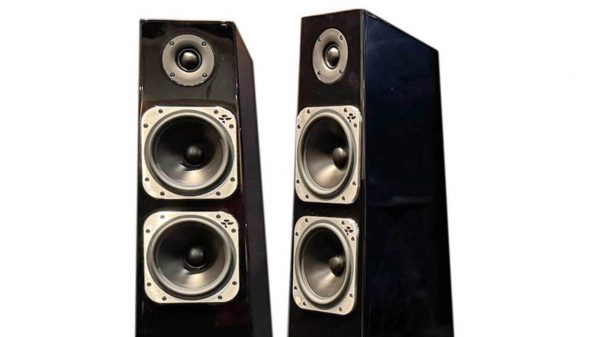Moore’s Law, the key engine driving the semiconductor industry for over 40 years, was recently recognized by industry analyst Dan Hutcheson as “one of the most important economic theories to be developed in the 20th century” and “definitely the most important theory developed in innovation economics.”
During his tenure as director of Fairchild Semiconductor’s Research and Development laboratories, Dr. Gordon E. Moore documented his observation of a manufacturing trend and economic model in Electronics magazine. He illustrated a semiconductor cost curve revealing the number of components that would be integrated in the most economical chips at given points in time. He stated: “The complexity for minimum component costs has increased at a rate of roughly a factor of two per year.”
Moore later changed his observation to a doubling every 2 years and over time this became “Moore’s Law,” which has since been translated to mean that the number of transistors on a chip doubles roughly every 2 years.
Moore’s Law Benefits Continue
The increase in the number of transistors on a microprocessor provides more functions per chip at significantly lower cost per function, resulting in even smaller, higher performance and more energy-efficient computing devices. Multi-core chips are a significant trend enabled by this Moore’s Law progress over the past decade. They provide vastly improved performance (especially for parallelizable applications) while keeping power consumption in check.
Additionally, the integration of more and more capabilities and features has became possible over computing history; we’ve seen math coprocessors, cache memory and integrated memory controllers come off motherboards and integrated into the microprocessor. Soon, Intel Corporation will showcase microprocessors with complete graphics solutions onboard as well. These processors vastly simplify motherboard design and enable sleek systems for all client segments.
Increasing the number of transistors on a microprocessor also enables the development of highly integrated, low-power and cost-effective System-on-a-Chip (SOC) components for smartphones, mobile Internet devices (MIDs) and embedded applications.
Moore’s Law is the driving force behind Intel’s “tick-tock” model, a new process technology approximately every 2 years and a new CPU microarchitecture on alternating years, resulting in new products brought to market annually.
Intel’s Latest Developments
Intel President and CEO Paul Otellini today displayed a silicon wafer containing the world’s first working chips built on 22nm process technology. The 22nm test circuits include both SRAM memory as well as logic circuits to be used in future Intel microprocessors.
“At Intel, Moore’s Law is alive and thriving,” said Otellini. “We’ve begun production of the world’s first 32nm microprocessor, which is also the first high-performance processor to integrate graphics with the CPU. At the same time, we’re already moving ahead with development of our 22nm manufacturing technology and have built working chips that will pave the way for production of still more powerful and more capable processors.”
The 22nm wafer displayed by Otellini is made up of individual die containing 364 million bits of SRAM memory and has more than 2.9 billion transistors packed into an area the size of a fingernail. The chips contain the smallest SRAM cell used in working circuits ever reported at .092 square microns. The devices rely on a third-generation high-k metal gate transistor technology for improved performance and lower leakage power.
By continuing to lead in manufacturing technology Intel is able to innovate and integrate new features and functions into its processors. Intel’s 32nm process is now certified and Westmere processor wafers are moving through the factory in support of planned fourth quarter revenue production. Following the move to 32nm Intel will subsequently introduce Sandy Bridge, Intel’s next new microarchitecture. Sandy Bridge will feature a sixth generation graphics core on the same die as the processor core and includes AVX instructions for floating point, media, and processor intensive software.
The Future of Moore’s Law
Intel currently has visibility on how to extend Moore’s Law for several more generations. This window of visibility has not changed over the past several decades. Moore’s Law’s continuation requires innovations in integrated circuit materials and structure, not just dimensional scaling. Strained silicon and high-k/metal gate transistors are good examples of this trend.
Another area that Intel is investigating is the use of compound semiconductors (rather than silicon) in the channel of the transistor. Such materials, also known as III-Vs, show promise of greatly improving transistor performance while reducing power. However, many challenges remain, particularly with integrating on a silicon substrate.
Many other challenges lay ahead, a notable one being lithography. Today, Intel uses light wavelength of 193nm to pattern its chips, even though they have features as small as 30nm. Going forward, Intel and the rest of the industry are looking at a variety of lithography options.
Intel is also researching 3-D Chip Stacking and other ways to integrate for high density chip to chip connections, small form factor and the ability to combine dissimilar technologies.
Summary
Moore’s Law will continue to drive the semiconductor industry well into the 21st century. Intel is the industry leader in bringing innovations from research to manufacturing and will continue to be the leader in driving Moore’s Law innovation.
References: Hutcheson, Dan (Jul 23, 2009). Innovation Economics: Why Moore’s Law is about more than semiconductors. The Chip Insider. Retrieved from: http://www.we itemprop="image" srch.com/Documents/view_editorial.php?flag=3&editorial_id=EL11U2U
Moore, Gordon E. (Apr 19, 1965). The Experts Look Ahead: Cramming more components onto integrated circuits. Electronics, Volume 38, Number 8. Retrieved from: http://download.intel.com/museum/Moores_Law/Articles-Press_Releases/Gordon_Moore _1965_Article.pdf
Intel and the Intel logo are trademarks of Intel Corporation in the United States and other countries.
* Other names and brands may be claimed as the property of others.























